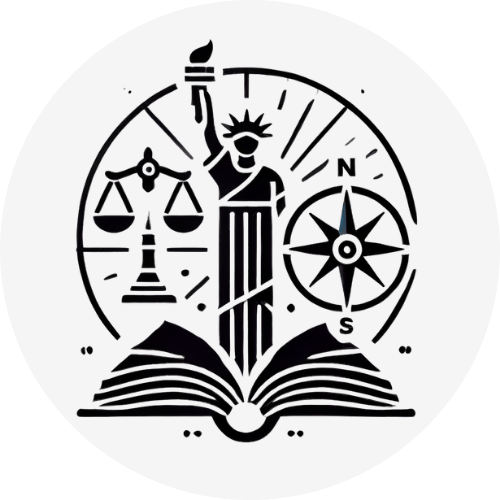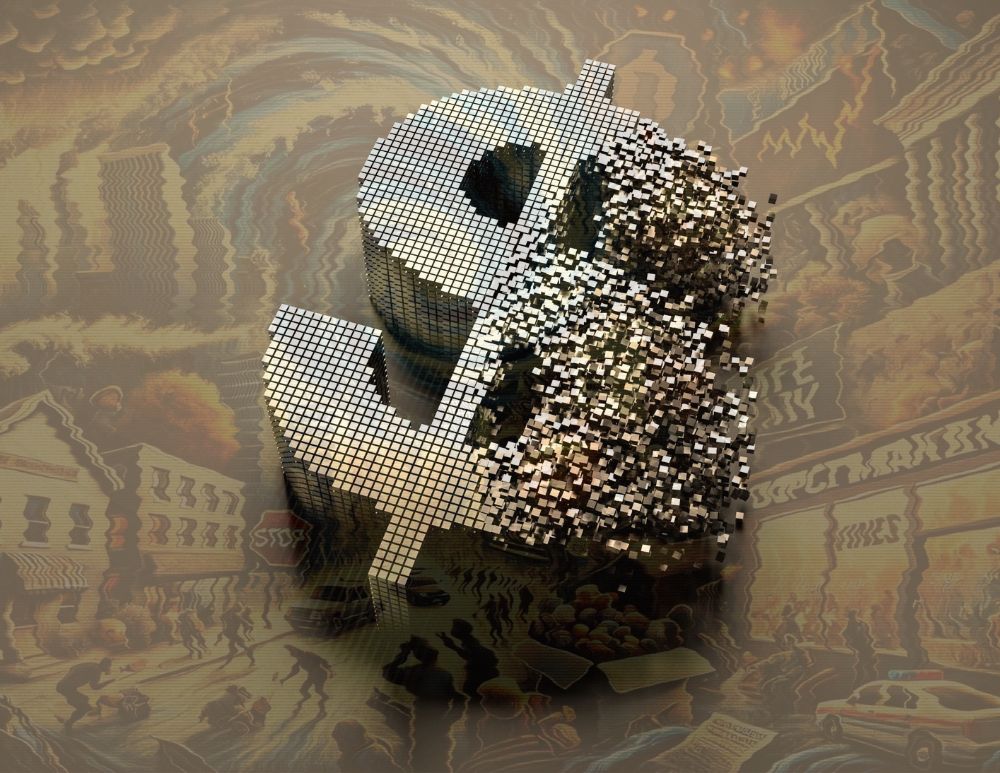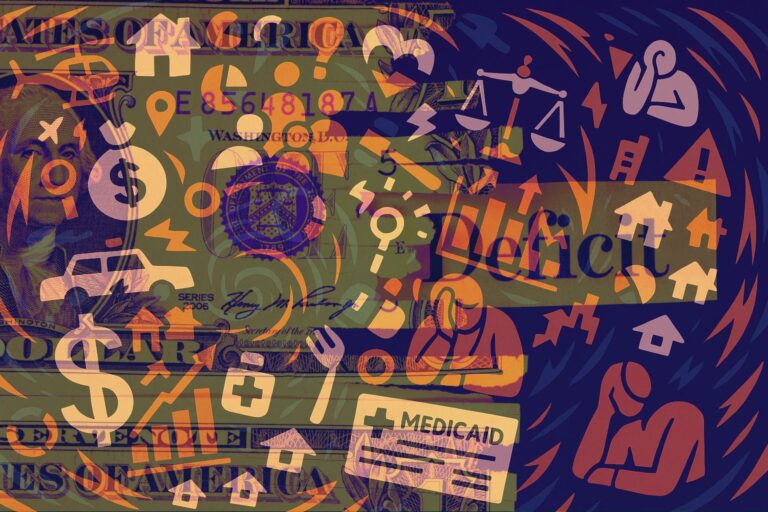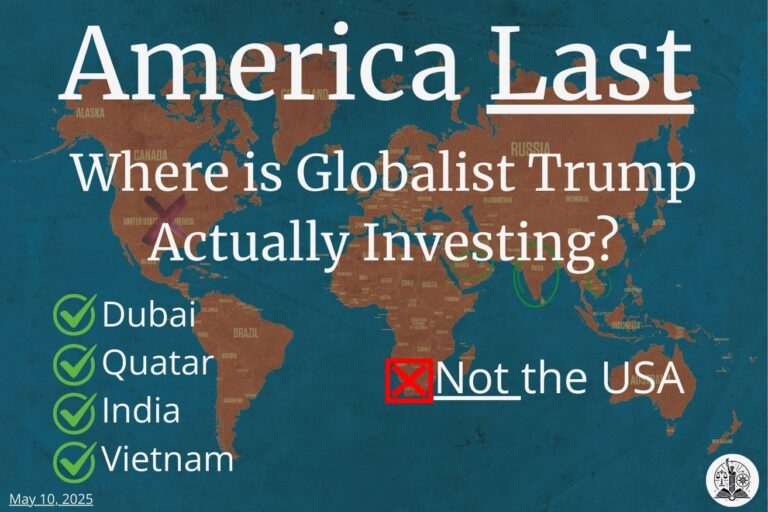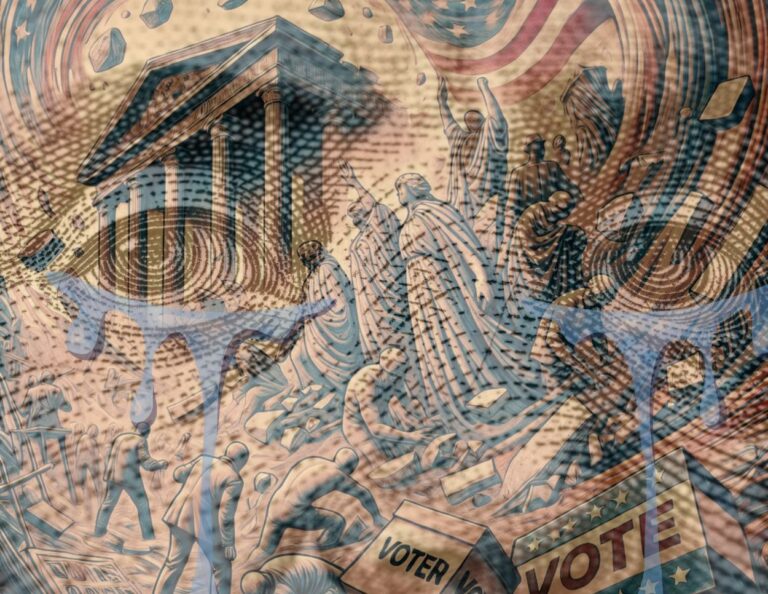It’s the Economy, Stupid—And Trump and Musk Are Crashing It
Campaign Promises vs Economic Reality
Throughout the campaign, Trump painted a picture of economic revival. He promised to bring back manufacturing, secure American jobs, and cut wasteful government spending. Since I wasn’t going to vote for him anyway, I didn’t pay much attention at first.
But as the election neared, three key themes kept surfacing:
- Tariffs – Raising costs on imports to protect American industry.
- Illegal Immigration – Mass deportations to open up jobs for U.S. workers.
- Massive Government Cuts – Shrinking federal spending to reduce inflation and strengthen the economy.
On the surface, these policies were sold as a plan for prosperity. But when I really looked at them, I had a different conclusion:
“This doesn’t make any sense through any lens—I think they’re actually trying to crash the economy.”
The question now isn’t just whether these policies will work, but why they’re being implemented in the first place.
- Do they truly believe these strategies will help, despite clear economic risks?
- Or is the economic damage deliberate, a crisis engineered for a different goal entirely?
The Campaign Promises: America’s Economic Revival
Throughout the campaign, Trump and his allies laid out a vision of an economy that would be stronger, fairer, and more prosperous for everyday Americans. Their plan rested on three core pillars:
- Tariffs would bring back manufacturing, making American industry competitive again and protecting jobs from foreign competition.
- Mass deportations would free up jobs for U.S. citizens, tightening the labor market and driving up wages.
- Cutting government waste would reduce inflation, shrink the federal deficit, and create a more efficient economy.
The promise was straightforward: these policies would lead to lower prices, higher wages, and booming economic growth.
For many, it was an appealing message. Manufacturing jobs that had been offshored for decades would return. American workers would see higher pay as competition from undocumented labor disappeared. A leaner government would mean fewer regulations, lower taxes, and more room for businesses to thrive.
It sounded like a formula for prosperity. But when you break these ideas down and look at how economies actually function, cracks begin to appear. Tariffs don’t just punish foreign companies; they raise costs for American consumers and businesses. Mass deportations don’t necessarily create jobs for U.S. citizens; they can leave entire industries scrambling for workers. Slashing government spending doesn’t automatically lower inflation; in many cases, it removes economic support and leads to instability.
The vision was bold. The reality is far more complicated.
How These Policies Are Actually Playing Out
Tariffs – Raising Prices Instead of Creating Jobs
Trump’s trade policy was built on the idea that tariffs would force companies to manufacture in the U.S., bringing back jobs and reducing reliance on foreign goods. The plan includes:
- 25% tariffs on Mexico and Canada, set to take effect March 4.
- An additional 10% tariff on Chinese imports is set to take effect on March 4, 2025, increasing the existing tariff from 10% to a cumulative 20%.
- A proposed 25% tariff on European Union imports, particularly targeting autos and industrial goods.
The intended outcome was clear: American businesses would move production stateside, industries would grow, and workers would benefit.
But that’s not what’s happening.
- Tariffs are taxes on imports. The costs don’t disappear—they get passed down to businesses and consumers in the form of higher prices.
- Companies aren’t reshoring production to the U.S.; instead, supply chains are shifting to Vietnam, Malaysia, and other countries that aren’t facing tariffs.
- The trade deficit isn’t shrinking, signaling that these measures aren’t achieving their intended effect.
Likelihood of Implementation:
- The Mexico and Canada tariffs are confirmed for March 4 and will move forward.
- The China tariff increase to 20% is already in place.
- The EU tariff remains a proposal, but tensions are rising, and implementation seems increasingly possible.
Is this a miscalculation, or are the administration and voters willing to accept higher prices as a trade-off for perceived broader goals?
Immigration Crackdowns – The Workforce Is Shrinking
The Trump administration has significantly increased immigration enforcement, aiming to remove undocumented workers and free up jobs for American citizens. Since January 20, ICE has escalated arrests and detentions, rapidly expanding its operations.
- More than 20,000 arrests in the first month of Trump’s second term.
- In contrast, ICE under Biden averaged about 14,200 arrests per month in 2024.
- Detention centers are approaching capacity, prompting the administration to explore expanded facilities.
The intended outcome is straightforward: fewer undocumented workers should mean more job opportunities for U.S. citizens, leading to higher wages and reduced strain on public services.
So far, that isn’t what’s happening.
- Businesses can’t find workers to replace those who have been detained or who are avoiding enforcement zones.
- Construction delays are growing as contractors struggle to hire skilled laborers.
- Farmers are warning of food price increases due to labor shortages in harvesting and food processing.
- Workers are leaving states with aggressive ICE crackdowns, not necessarily because they’ve been detained, but because they fear being next.
This isn’t just about the numbers detained or deported. The fear of enforcement is already shifting labor patterns, with businesses and entire industries feeling the impact.
Is this an unintended consequence or does the administration see this economic disruption as an acceptable cost?
Government Cuts – Economic Shrinkage, Not Growth
The Trump administration is pursuing deep spending cuts, arguing that reducing the size of government will eliminate waste, improve efficiency, and lower inflation. Agencies have been ordered to downsize, and new fiscal targets have been set.
- Federal agencies must submit workforce reduction plans by mid-March.
- The Department of Government Efficiency (DOGE) is tasked with achieving at least $1 trillion in deficit reductions.
- While cuts are happening now, the full scope of reductions to Medicaid, food assistance, and other social programs remains uncertain.
The goal is clear: a leaner federal government, lower deficits, and an economy free from bureaucratic drag.
The impact, however, extends beyond the government itself.
- Federal job losses don’t exist in isolation. Contractors, suppliers, and businesses that depend on government spending are already feeling the effects.
- Cutbacks in social programs weaken consumer spending. When lower-income households lose support, they spend less, reducing demand across multiple industries.
- Investors are uneasy. Markets react not just to current conditions but to expectations of what’s coming. The uncertainty surrounding federal cuts is adding to volatility.
Reducing government waste is a common goal across political ideologies. The concern now is whether these cuts are targeted for efficiency—or if they are being pursued with little regard for the broader economic consequences. If job losses spread and consumer spending declines, the economy could contract rather than grow.
Is this fiscal responsibility, or designed disruption?
Incompetence vs. Intentional Destruction?
At first, it seemed like the administration simply misunderstood how economies function. Maybe they believed tariffs would strengthen American manufacturing, that removing undocumented workers would lead to higher wages, and that slashing government spending would lower inflation without consequences.
But as more policies roll out, the question keeps coming up: Are they just wrong, or is this intentional?
Arguments for “They Think This Will Help”
- They genuinely believe tariffs will revive American industry, forcing businesses to bring production back to the U.S.
- They think deportations will open jobs for American workers, despite historical data showing labor shortages in industries reliant on immigrant labor.
- They see government spending as wasteful and assume that cutting it will boost efficiency rather than weaken economic stability.
Arguments for “They’re Intentionally Crashing the Economy”
- Elon Musk has already acknowledged that ‘temporary hardship’ is part of the plan. If they know it will cause pain, then the damage is expected, not accidental.
- Economic warnings from Wall Street, independent economists, and even conservative business leaders are being ignored. Businesses are already adjusting for labor shortages and higher costs, signaling that these policies aren’t working as advertised.
- Destabilizing the economy often consolidates power. Historically, economic chaos has been used as a political tool, creating conditions where people look for strong leadership to restore order.
Musk’s statement a few months ago that Americans should prepare for temporary hardship raises the question: If they anticipate an economic downturn, is it because they miscalculated—or because that’s the goal?
Which is it—misguided ideology or deliberate economic sabotage?
What Happens Next: The Risk of Social Unrest
The economy is shifting, and while it’s too early to predict the full impact of these policies, the warning signs are clear. Markets, employment, and consumer behavior are already reacting, and public frustration is beginning to emerge.
Economic Indicators Showing Strain
- Stock Market Decline
- S&P 500 down 0.8% since January 19, 2025.
- Nasdaq Composite down 2.8% in the same period.
- Market volatility increasing due to investor uncertainty over tariffs and budget cuts.
- Unemployment Claims Rising
- Initial jobless claims up 10%, rising from 220,000 (week ending January 18) to 242,000 (week ending February 22).
- Highest level of unemployment claims in three months.
- Housing Market Strain
- Labor shortages in construction slowing homebuilding and renovations.
- Home prices rising due to delays and higher labor costs.
- Consumer Confidence Falling
- The Conference Board’s Consumer Confidence Index dropped 7.0 points in February, reaching 98.3, the lowest level in eight months.
- Retail Spending Slowdown
- Households cutting discretionary spending as economic uncertainty grows.
- Reports of slowing foot traffic in major retail sectors.
- Business Investment Hesitation
- Companies delaying hiring and expansion plans due to uncertainty over tariffs, labor supply, and federal spending cuts.
- Capital investments slowing as firms assess long-term risks.
- Supply Chain Disruptions
- Tariffs pushing companies to relocate production away from China, Mexico, and Canada—not back to the U.S., but to Vietnam and Malaysia.
- Businesses adjusting logistics to avoid higher import costs.
The Next Stage: Public Reaction
Rather than large-scale protests, public reaction is taking shape through economic shifts, industry resistance, and growing dissatisfaction rather than mass demonstrations—at least for now.
- Worker Shortages & Labor Disruptions
- Some industries (construction, agriculture, food processing) struggling to replace lost workers.
- Small-scale slowdowns or walkouts possible in meatpacking, warehouses, and farms.
- Unions mostly inactive, but logistics and service worker groups (Teamsters, SEIU) may push back.
- Business Opposition to Immigration Crackdowns
- Construction, agriculture, and hospitality industries lobbying against ICE enforcement.
- Some businesses seeking exemptions or alternative hiring solutions.
- States with large immigrant workforces (California, Texas, Florida) seeing economic strain.
- Impact of Government Cuts on Communities
- Federal job losses affecting local economies, especially in government-dependent areas.
- Increased demand on food banks, Medicaid, and housing assistance.
- Social strain growing as cuts take effect over time.
- Consumer Frustration Over Rising Costs
- Tariffs raising prices on groceries, consumer goods, and raw materials.
- Retail sales slowing as consumer confidence drops.
- Potential for inflation to rise if supply chain disruptions worsen.
- Political & Regional Divides Widening
- States with major industries affected by labor shortages and trade issues resisting federal policies.
- Rural communities and agricultural producers feeling economic strain despite supporting Trump.
- Economic hardship could challenge the “golden age” narrative from the campaign.
The Risk of Social and Civil Unrest
Economic instability has historically been a precursor to unrest. When financial hardship spreads—through rising unemployment, declining wages, and higher costs of living—public frustration builds, and confidence in institutions erodes. If economic conditions continue to worsen, social tensions may escalate.
- Job losses and wage stagnation leave people unable to meet basic needs, leading to heightened resentment.
- Rising costs for food, housing, and essential goods create desperation, particularly among lower-income populations.
- Cuts to government programs that serve vulnerable communities can turn localized struggles into widespread crises.
- A shrinking middle class amplifies tensions, as more people feel economically insecure and lose trust in political leaders.
History offers clear examples of this pattern:
- The Great Depression led to widespread strikes and demonstrations.
- The 2008 financial crisis fueled movements like Occupy Wall Street.
- In 2020, economic pressures combined with racial tensions sparked some of the largest protests in U.S. history.
While there is no certainty that the current situation will escalate in the same way, the ingredients for social unrest are forming. If frustrations mount and conditions deteriorate, the government may face a choice: address the economic pain or suppress the response.
The “Law and Order” Response
When economic unrest escalates, governments often respond with force, presenting it as a necessary measure to maintain stability. This follows a familiar pattern seen in past crises.
- Protests are suppressed early to prevent them from gaining momentum.
- Unrest is framed as a national security threat, shifting blame away from policy failures and onto outside agitators, criminal groups, or political enemies.
- Executive power expands under emergency measures, often restricting civil liberties in the name of restoring order.
- Leadership positions itself as the only force capable of maintaining stability, consolidating control while dismissing opposition as reckless or dangerous.
Trump has already positioned himself as the “law and order” candidate, and if economic conditions worsen, his administration could justify:
- Expanded policing and security measures, targeting protests, strikes, or disruptions.
- Crackdowns on labor actions, particularly in industries affected by worker shortages or ICE enforcement.
- New restrictions on dissent, framed as necessary under national security concerns.
If economic instability turns into social unrest, the administration may use it as proof that stronger executive authority is needed—shifting the narrative away from the downturn itself and onto the idea that chaos must be controlled. This tactic has been used by authoritarian-leaning leaders throughout history, using economic crises as opportunities to expand power.
How Close Are We to This Reality?
- Right now, unrest remains mostly economic, not civil. People are adjusting to changing conditions, but major protests are still limited.
- Localized strikes or demonstrations could increase if labor shortages persist or wages stagnate while costs rise.
- A financial downturn—such as a stock market crash or recession—would accelerate unrest, making a “law and order” response more likely.
Economic pain rarely stays confined to financial markets. It moves into daily life, changing how people work, spend, and react. If conditions deteriorate, the government will face a choice: address the economic issues or suppress the reaction. Which path will they take?
Sources Include
“Trump confirms 25% tariffs on Mexico and Canada starting March 4”
https://apnews.com/article/dd91e149bf366bc1b3f791bbabd64772
“Trump doubles tariffs on Chinese imports from 10% to 20%”
https://www.wsj.com/economy/global/china-trump-tariffs-factory-plans-f7bbb17f
“Trump threatens 25% tariffs on European Union imports”
https://www.ft.com/content/2f0288f6-3f6a-4334-b666-3f0122981842
“Market reacts to increased tariffs and economic uncertainty”
https://www.theguardian.com/business/live/2025/feb/27/rolls-royce-dividend-share-buyback-gatwick-runway-decision-eu-tariffs-us-growth-business-live-news
“Trump’s immigration crackdown leads to surge in ICE arrests”
https://www.theguardian.com/us-news/2025/feb/21/trump-ice-caleb-vitello
“ICE stepping up workplace raids, surpassing pre-pandemic levels”
https://www.nytimes.com/2025/02/24/us/ice-workplace-arrests-trump.html
“Federal workers ordered to justify jobs or face mass layoffs under DOGE initiative”
https://www.reuters.com/world/us/ultimatum-federal-workers-raises-tensions-between-musk-white-house-staff-2025-02-27/
“Mass government layoffs announced as part of cost-cutting measures”
https://www.politico.com/news/2025/02/26/va-pauses-billions-in-cuts-lauded-by-musk-00206372
“S&P 500 and Nasdaq drop as investors react to tariffs and spending cuts”
https://www.marketwatch.com/story/u-s-recession-no-longer-seems-completely-unthinkable-as-jobless-claims-spike-higher-74acd4ca
“Consumer confidence falls amid uncertainty over economic policies”
https://www.conference-board.org/topics/consumer-confidence/press/CCI-Feb-2025
“US housing market slows as construction sector struggles with labor shortages”
https://www.businessinsider.com/us-economy-gdp-slowing-down-recession-risk-rising-unemployment-inflation-2025-2
“Business investment slows as uncertainty over tariffs and labor markets grows”
https://www.businessinsider.com/us-economy-former-fed-economist-3-biggest-risks-markets-2025-2
“Companies moving supply chains away from China, Mexico, and Canada”
https://www.businessinsider.com/us-economy-slowing-signs-slowing-doge-sluggish-growth-2025-2
“Musk agrees economic reforms could cause ‘temporary hardship’ for Americans”
https://finance.yahoo.com/news/elon-musk-warns-hardship-americans-163015991.html
“Musk’s controversial email to federal workers demanding efficiency improvements”
https://www.theguardian.com/us-news/live/2025/feb/24/elon-musk-email-donald-trump-us-government-latest-live-politics-news
“Elon Musk’s Department of Government Efficiency (DOGE) and its radical cost-cutting measures”
https://nymag.com/intelligencer/article/musk-doge-and-the-ai-fueled-plot-to-fire-everybody.html
